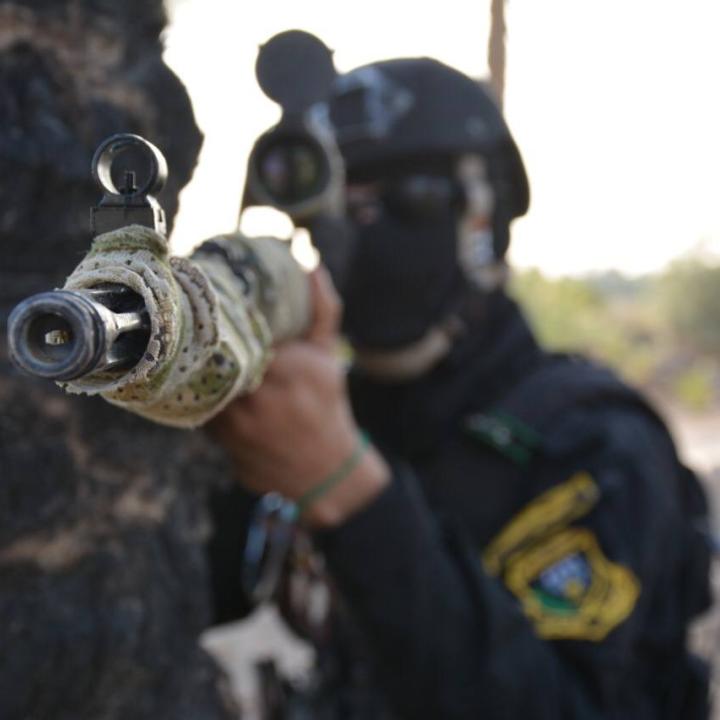
The Militia Assassination Surge (Part 2): December Attacks

Desperate militias are now killing Shia civilians in mass-casualty bombings as they try to assassinate Iraqi investigators and intelligence personnel.
Since early November, when militias such as Asaib Ahl al-Haq (AAH), Kataib Hezbollah (KH), and Kataib Sayyid al-Shuhada attacked the outer perimeter of the government center, armed groups have issued numerous explicit threats to kill Iraqi security force members, as detailed in Part 1 of this analysis. Even more troubling, these threats have manifested into real-world attacks on a range of Iraqi officials in the past week.
The Assassination Wave
The first killing that can be tied to the new wave was the December 4 Karbala assassination of Abbas Kadhim Abdulwahid, an Iraqi investigator who was involved in bringing murder charges for the May 9 killing of activist Ehab al-Wazni. The main figure charged for Wazni's murder was militia leader Qasim Muslih, who works closely with KH in Anbar and Baghdad. Sabereen News reported Abdulwahid's killing soon after it occurred, at 20:41 Baghdad time on December 4.
On December 5, Maysan deputy policy chief Mohammed Habbousi Karim al-Sudani was killed. He too had been involved in investigating and arresting militia assassins.
On December 6, a six-man assassination team was arrested in Kadhimiyah, Baghdad. They had intended to kill a security force leader but were detected while undertaking pre-attack surveillance. They were found with four silenced pistols spread between two bike teams, as well as a backup car with two men armed with AK-type rifles.
Militias Kill Four Civilians in Mass-Casualty Bombing
On December 7, a motorcycle rigged with explosives set fire to a civilian car and killed four civilians in Basra. Governor Asad al-Eidani quickly blamed the Islamic State for the incident.
The next day, however, Prime Minister Mustafa al-Kadhimi visited Basra and stated, "Yesterday’s [attack] was an assassination attempt against an officer in Basra because he was...investigating the Death Squad.” He used the government's term for Iran-backed militia hit squads that target a wide range of activists and media figures they deem harmful to their interests.
In February, for example, Kadhimi announced that the Death Squad was responsible for killing multiple civilians, including a fourteen-year-old boy and journalist Ahmad Abdulsamad, who was assassinated in Basra the previous month. In October, after attending court sessions for the Death Squad members who killed Abdulsamad, his brother Mohammed gave a TV interview in which he said that KH was behind the assassination. Later, a Death Squad member from KH named Hamza Kadhim al-Eidani was found guilty of killing Abdulsamad and his colleague Safa Abdulhamid. He was sentenced to death on November 1.
Prime Minister Kadhimi is now saying that those behind the December 7 motorcycle explosion were targeting an officer working on the Death Squad case. One security source told AFP that the officer was a member of the Iraqi National Intelligence Service "investigating the assassination of the activists.”
Militia Complicity in Assassinations
The preponderance of evidence suggests a strong KH role in some of the killings (December 4 in Karbala and the December 7 bombing). Others may have been the result of AAH fighting with Muqtada al-Sadr's supporters (e.g., the December 5 killing in Maysan). The killers themselves are of course in violation of many parts of Iraq's penal code, anti-terror laws, and international human rights laws. As noted in Part 1, Sabereen News and others who incite premeditated murder of government officials may be liable as accessories to the crime. Punishments for accessories can be the same as for the principal. Those who fail to notify the authorities of an offense may bear legal liability as well, including financial penalties and detention.







